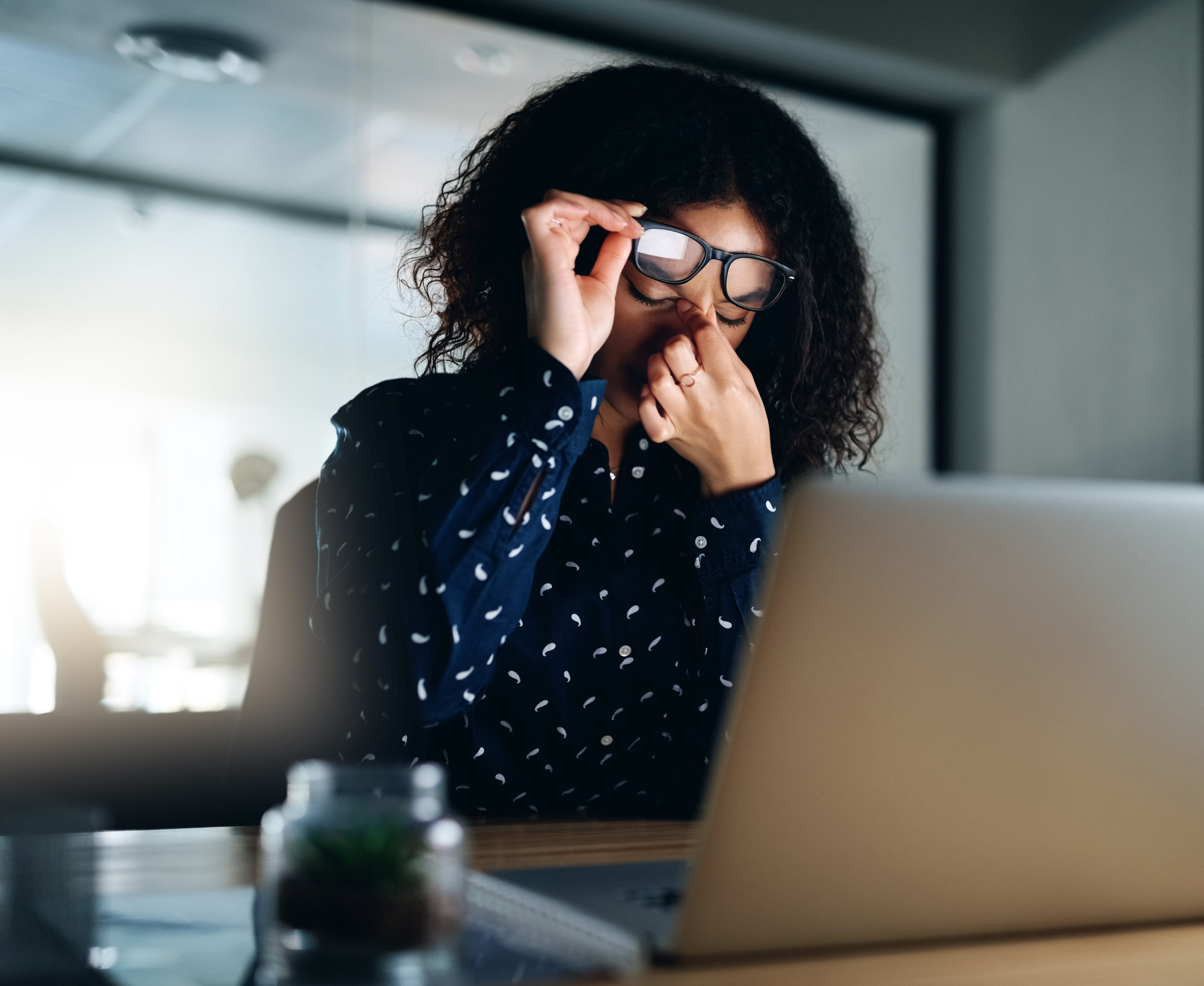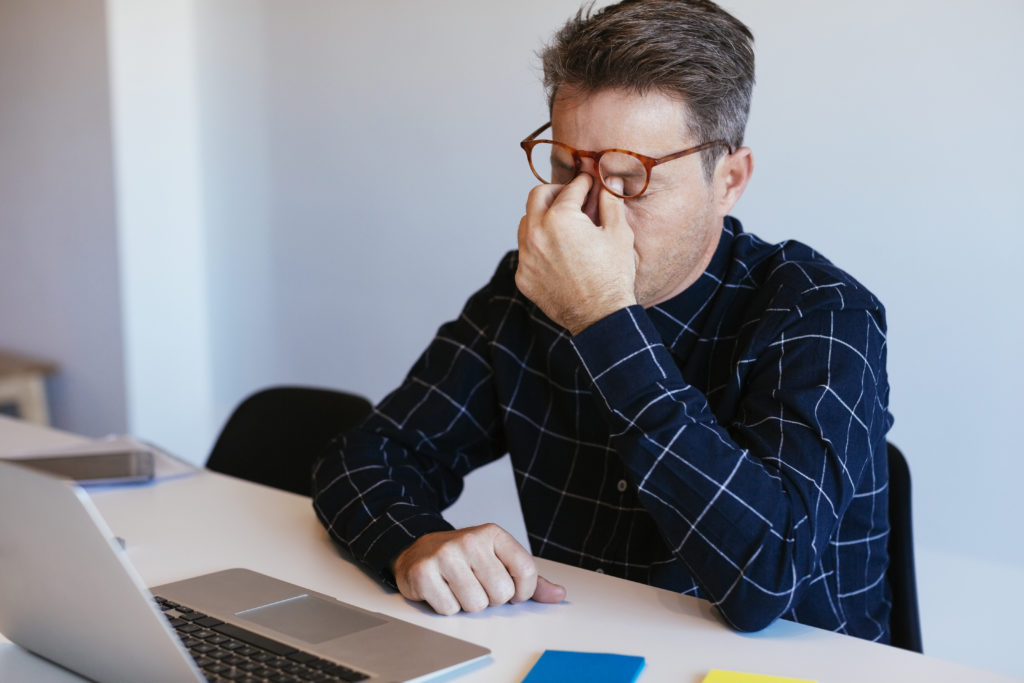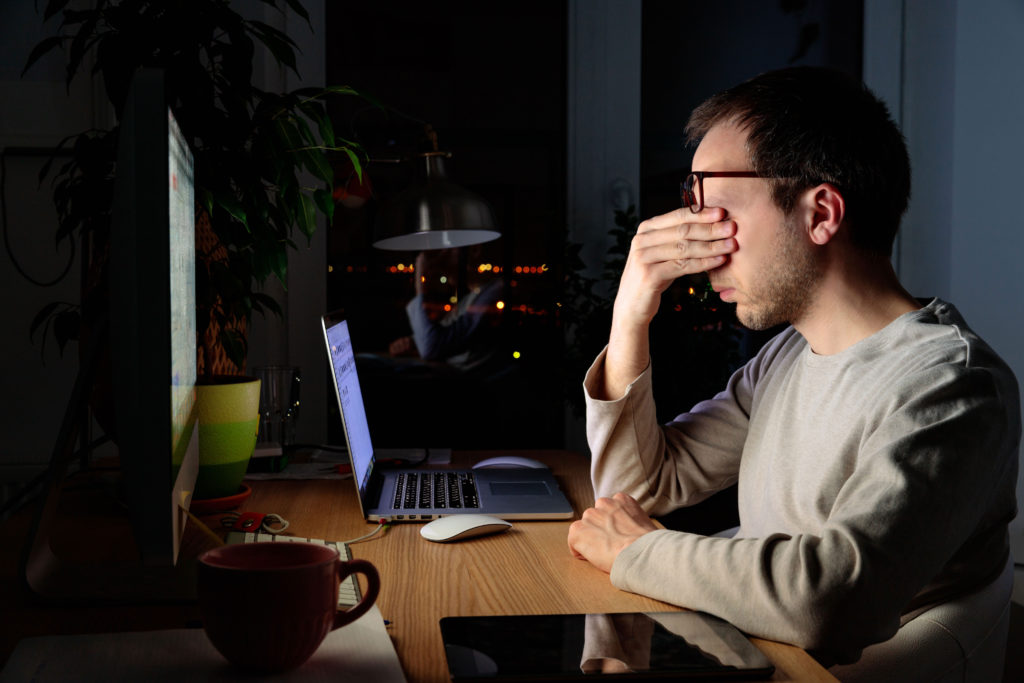
If you experience eye fatigue or pain when spending large amounts of time in front of a screen, you’re not alone. According to the Washington Post, over 73% of young adults suffer from the symptoms of digital eye strain.
What are the symptoms of digital eye strain?
Do your eyes burn or itch? Are they watery or dry? Do you experience blurry or double vision? If this sounds like you, you might have digital eye strain. Your eyes might also be sensitive to light, or even easily fatigued. However, digital eye strain doesn’t affect only your eyes. You may experience symptoms throughout your entire body, such as headaches, and even pain in the neck, back, and shoulders.
If you work from home, it can be especially difficult to maintain a healthy lifestyle, and taking care of your eyes is a huge part of your physical health. Luckily, there are some strategies that can help you prevent eye strain.

What can you do to help prevent digital eye strain?
From computers and tablets to phones and TVs, we are surrounded by screens. With how much of our daily lives depend on technology, it can be difficult to take a screen break. However, there are still steps you can take to keep your vision healthy and protect your eyes from strain.
Follow the 20-20-20 rule
The 20-20-20 rule can help prevent eye strain caused by screens. Plus, it gives you a quick break from your work for a mental reset. The rule states that for every 20 minutes you look at a screen, look at something 20 feet away for 20 seconds. Looking at any object that is 20 feet away helps your eye muscles relax and take a break, too. If you struggle to remember to take breaks, try setting an alarm on your phone for 20 minutes.
Remember to blink
According to the American Academy of Ophthalmology, the reason we get digital eye strain is that we blink less when staring at our devices. Our “blink rate” can be cut in half when staring at screens or doing other activities, such as reading. As you go through your day, make sure you aren’t focusing too intently and forgetting to blink!

Wear specialized glasses
Taking advantage of specialized eyewear can make a big difference when it comes to digital eye strain. For example, computer glasses have built-in magnification based on the distance between you and your computer. They often have anti-reflective and anti-glare coatings to help fend off eye strain. Before using any type of prescription glasses, you should talk to your eye doctor about what’s right for you.
Adjust your device settings
You can adjust the brightness, contrast, text size, and other aspects of your digital devices in your settings. For example, you can set up your devices to use dark mode at night. If you notice that you’re squinting at your screen, you might need to increase the size of the text. This can make your experience more comfortable and give your eyes a much-needed break.

Is there a cure for digital eye strain?
Thankfully, digital eye strain is not permanent and only causes temporary discomfort. You can alleviate mild symptoms by using lubricating eye drops, taking a break from screens, and wearing your prescribed eyewear. Make sure to follow these tips to reduce eye strain as well. If you still experience symptoms of eye strain, consult your doctor about next steps.
How to create a digital life balance
In a world full of technology, cultivating a digital balance is the key to staying mentally and physically healthy. So how much screen time is too much? The right amount will vary based on your age, career, individual preferences or limitations, and how much time you spend socializing or being active.
What are you doing to build a digital life balance and prevent digital eye strain? Leave us a comment below with what works best for you.